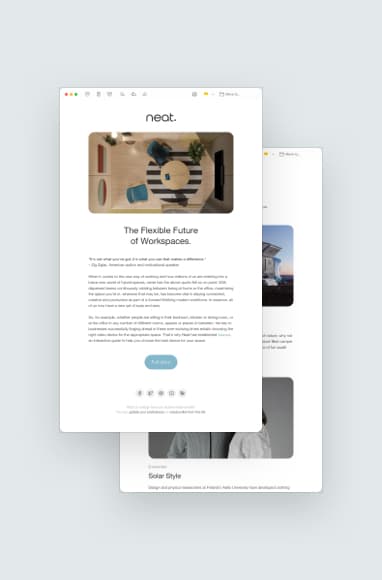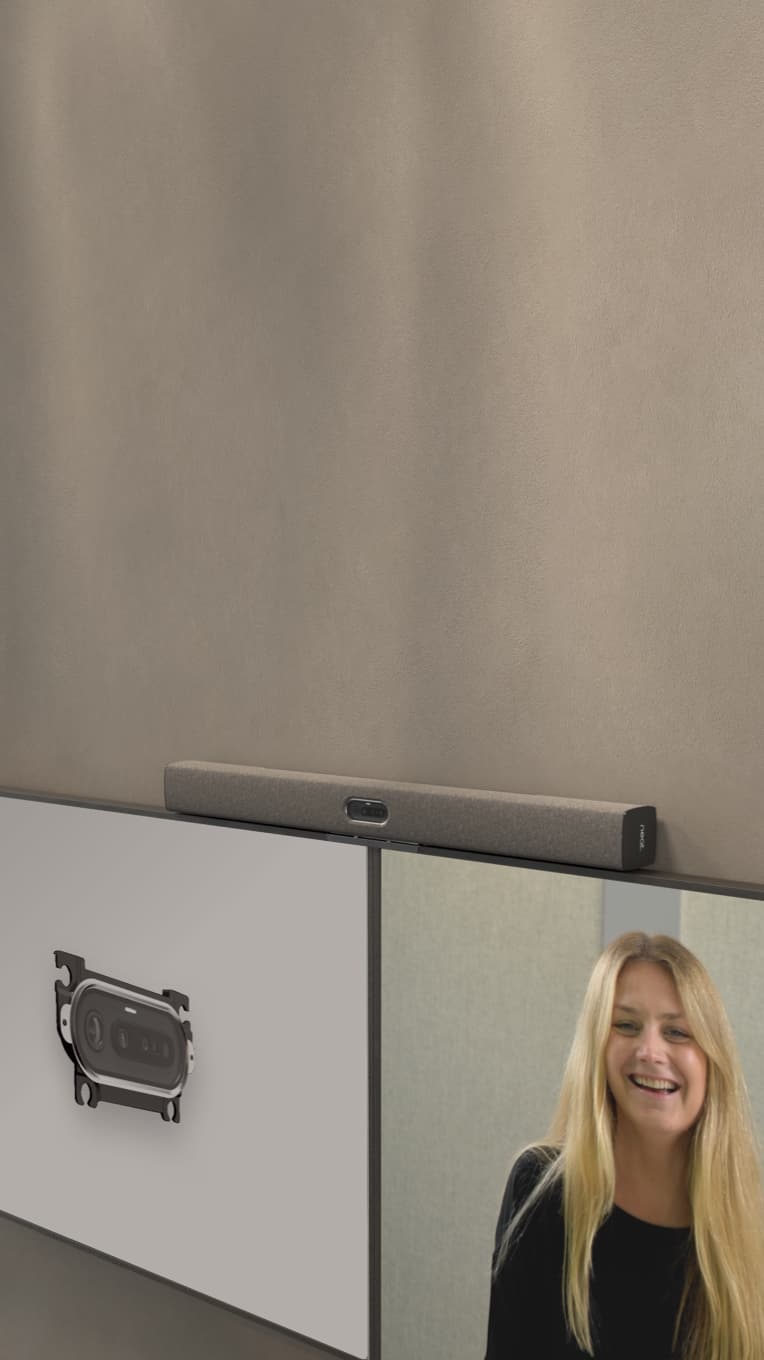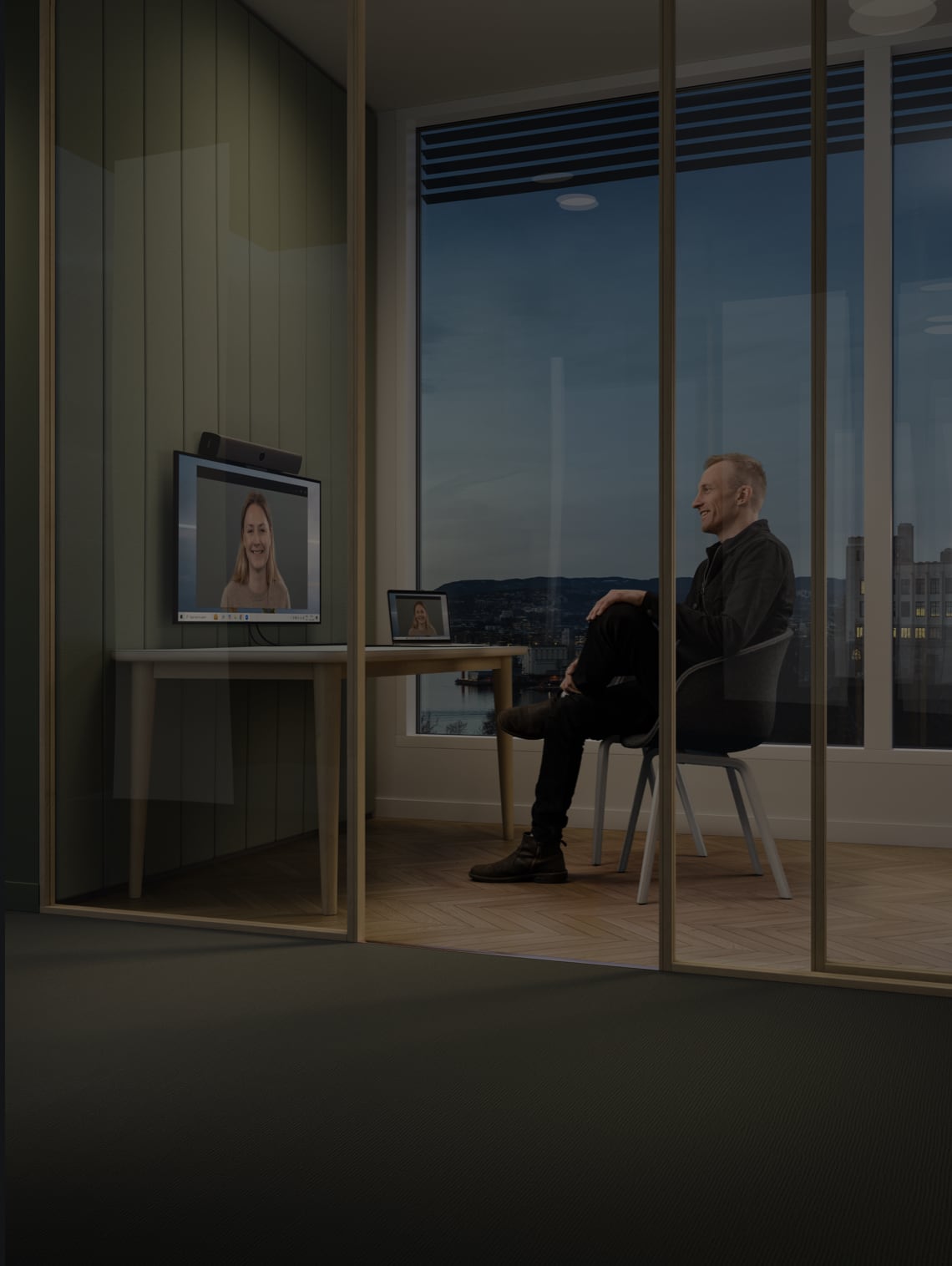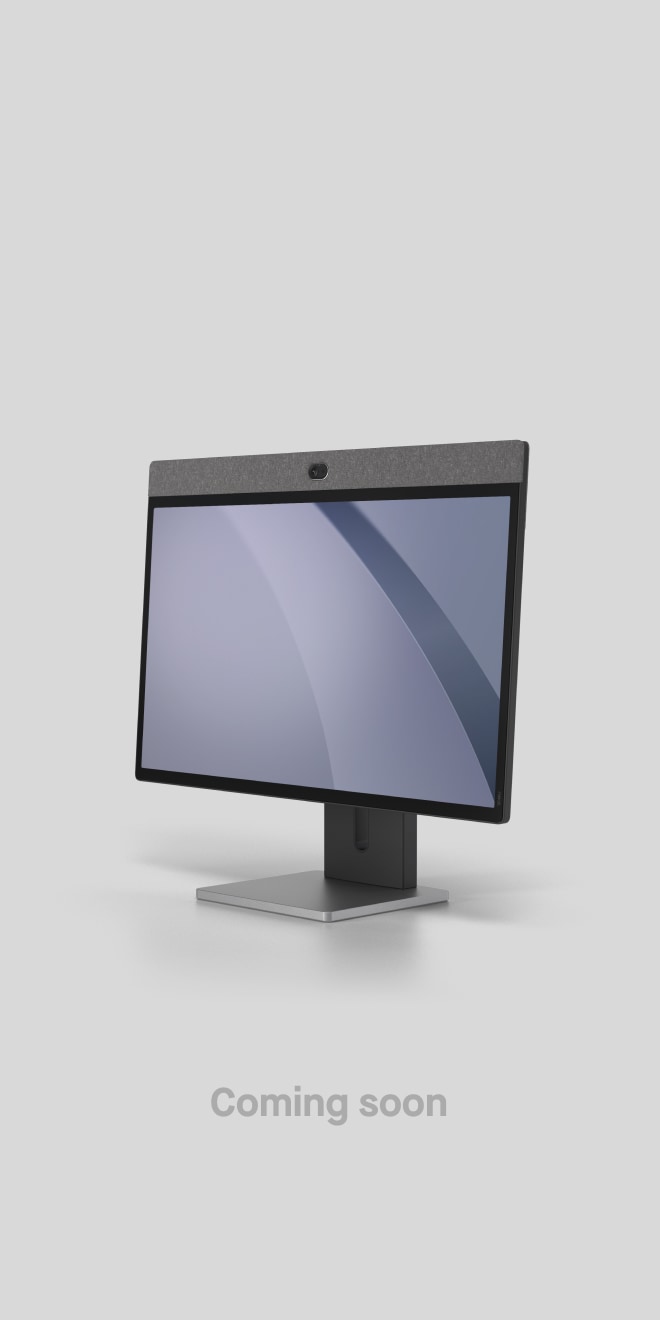The Evolution of Video Conferencing: From Boardrooms to Hybrid Solutions
Neat, Jul 16, 2025

Key takeaways
- The evolution of video conferencing has fundamentally transformed how organizations operate, communicate, and innovate.
- From its beginnings as a niche technology confined to corporate boardrooms, video conferencing has evolved into an essential tool supporting hybrid work models and globally distributed teams.
- Hybrid video solutions now enable seamless collaboration across diverse locations.
- The ongoing meeting room technology evolution continues to empower flexible work environments.
- Looking forward, the future of conferencing promises revolutionary advancements through AI (artificial intelligence), immersive technologies, and seamless device interoperability.
Introduction
In the modern era, the workplace has transcended the limitations of physical office spaces. At the heart of this transformation lies the evolution of video conferencing, a journey that has redefined the ways in which organizations collaborate, make strategic decisions, and foster innovation. Video conferencing has evolved from rudimentary and expensive early systems into versatile, accessible, and highly sophisticated solutions. Today, hybrid video solutions stand at the forefront of corporate communication, seamlessly connecting on-site employees with remote counterparts to drive productivity and engagement.
This blog examines the historical progression of video conferencing, the latest developments in meeting room technology, and what the future holds for this vital communication tool. We also explore how companies like Neat are pioneering the development of next-generation video collaboration devices, shaping the future of conferencing.
The early days of video conferencing
The story of video conferencing begins in the 1960s, when experimental video phone technologies were first introduced. These early systems were largely impractical, hindered by high costs, technical limitations, and poor video quality. It wasn’t until the 1980s and 1990s that commercial video conferencing gained a foothold within large enterprises capable of affording the expensive dedicated lines and proprietary hardware necessary for video-enabled meetings.
During this period, video conferencing was almost exclusively confined to dedicated corporate boardrooms. Complex installations, specialized equipment, and IT support were prerequisites for hosting a video call. Connectivity was often unreliable, and the visual experience was far from what today’s users expect. Nevertheless, these early adopters laid the foundation for a technological revolution that would redefine communication in the decades to come.
Broadband internet and software-based solutions
The turn of the millennium marked a transformative phase in the evolution of video conferencing. The widespread adoption of broadband internet enabled faster data transmission, making it feasible to share higher-quality video and audio in real time. Advances in video compression standards further improved video clarity without requiring exorbitant bandwidth.
Software-based solutions like Skype, WebEx, and later, Google Hangouts, democratized access to video conferencing by eliminating the need for specialized hardware. Small businesses and even individual users could now engage in video calls using standard computers and webcams. This shift catalyzed the meeting room technology evolution, as businesses increasingly integrated more cost-effective, user-friendly video conferencing solutions into their operational workflows.
Interoperability also improved during this era, allowing participants using different platforms and devices to join meetings more easily. By the late 2000s, HD (high-definition) video became standard, enhancing the quality of virtual interactions and enabling more natural, productive conversations.
Rise of cloud-based and mobile solutions
The advent of cloud computing further propelled video conferencing into mainstream business operations. Cloud-based platforms such as Zoom, Microsoft Teams, and Google Meet eliminated the need for on-premises servers, offering scalable, subscription-based models that could support organizations of any size.
The proliferation of mobile devices also redefined how and where meetings could take place. Smartphones, tablets, and lightweight laptops enabled employees to join meetings from virtually any location, ushering in a new era of flexibility and mobility. Organizations began embracing remote work and distributed teams, a trend that accelerated exponentially during the COVID-19 pandemic.
During this phase, companies like Neat emerged as innovators in the field. By designing specialized video collaboration devices optimized for cloud platforms, Neat simplified meeting participation and ensured high-performance audio and video, regardless of location. Neat’s solutions catered specifically to the needs of hybrid workplaces, where employees operate from both physical offices and remote environments.
Emergence of hybrid video solutions
As businesses adopted hybrid work models, the demand for equitable meeting experiences grew. Hybrid video solutions are now central to the corporate communication landscape, bridging the gap between in-office and remote employees. These solutions combine cutting-edge hardware and intuitive software to create dynamic, adaptive conferencing environments that ensure all participants feel equally engaged and heard.
Neat’s products exemplify the meeting room technology evolution. Devices like Neat Bar and Neat Board integrate AI-powered framing, superior audio pickup, and touch-screen controls to streamline collaboration. These purpose-built devices automatically adjust framing to focus on active speakers, suppress background noise, and provide crystal-clear video and audio, even in challenging environments.
By prioritizing simplicity and performance, Neat’s hybrid video solutions support modern enterprises in fostering inclusive meeting experiences. The company’s commitment to user-centric design ensures that both remote and in-person attendees remain equally connected and engaged during virtual interactions.
Neat: Pioneers in the video conferencing space
Neat has quickly established itself as a pioneer in the video conferencing industry. Launched with a mission to make virtual meetings as natural and engaging as face-to-face interactions, Neat develops innovative video collaboration devices that seamlessly integrate with leading platforms such as Google Meet, Zoom, and Microsoft Teams.
What sets Neat apart is its dedication to creating hardware that blends simplicity with advanced functionality. From Neat Frame to Neat Bar Pro, each device is meticulously engineered to deliver optimal performance while maintaining an intuitive, easy-to-use interface. Features like Neat Symmetry ensure that all participants are framed equally, creating a balanced and immersive meeting experience.
Neat’s devices incorporate AI-powered cameras that intelligently track participants, automatic framing technology that adjusts to active speakers, and superior microphone arrays that capture clear audio from every corner of the room. The company also emphasizes sustainability and minimalism in its product designs, ensuring devices not only function flawlessly but also complement modern office aesthetics.
In addition to hardware innovation, Neat invests in continuous software updates and support, ensuring that its devices remain compatible with evolving collaboration platforms. This commitment to adaptability positions Neat as a future-ready solution provider, helping organizations navigate the ongoing shift toward hybrid work environments.

AI and the future of conferencing
As we look ahead, the future of conferencing promises transformative developments driven by artificial intelligence and immersive technologies. AI-powered enhancements are already reshaping video conferencing by automating meeting management, optimizing video and audio quality in real time, and providing features like real-time transcription and multilingual translation.
Emerging technologies such as Virtual Reality (VR) and Augmented Reality (AR) are poised to further revolutionize video conferencing. These technologies could enable participants to interact within fully immersive virtual spaces, replicating the nuances of in-person collaboration more effectively than traditional video calls.
The expansion of 5G networks and advancements in edge computing will also contribute to more reliable and faster video connections, regardless of geographical location. Organizations can expect seamless, lag-free video conferencing experiences that facilitate real-time collaboration on a global scale.
Neat is actively exploring these advancements, ensuring its devices remain at the forefront of innovation. By integrating AI-driven features and preparing for immersive meeting solutions, Neat aims to empower businesses to embrace the next generation of collaboration technologies.
Why video conferencing matters more than ever
In today’s interconnected world, the importance of effective communication cannot be overstated. Video conferencing plays a critical role in enabling organizations to connect, collaborate, and innovate across geographical and cultural boundaries. Benefits include reducing travel costs, minimizing environmental impact, supporting employee work-life balance, and accelerating decision-making processes.
As hybrid work models become the standard, investing in state-of-the-art hybrid video solutions is essential for businesses aiming to maintain competitiveness and foster inclusive, productive work environments. With pioneers like Neat leading the way, organizations have access to reliable, high-performance devices that support seamless and engaging video collaboration.
Conclusion
The evolution of video conferencing from its early beginnings to today’s sophisticated hybrid video solutions reflects the broader trends shaping the future of work. From boardrooms filled with proprietary hardware to dynamic hybrid workspaces powered by AI and cloud technology, video conferencing has become an indispensable tool for modern enterprises.
Companies like Neat stand at the forefront of this transformation, delivering pioneering devices that combine simplicity, performance, and forward-thinking design. By enabling equitable meeting experiences and preparing for future technological shifts, Neat continues to shape the future of conferencing.
Why not book a demo and experience Neat devices for yourself?
Sources
- The Future of Work Reinvented. Gartner.
- How Hybrid Work Is Reshaping the Office. Forbes.
- The State of AI in 2024. McKinsey.
- The Science of Remote Work. Harvard Business Review






